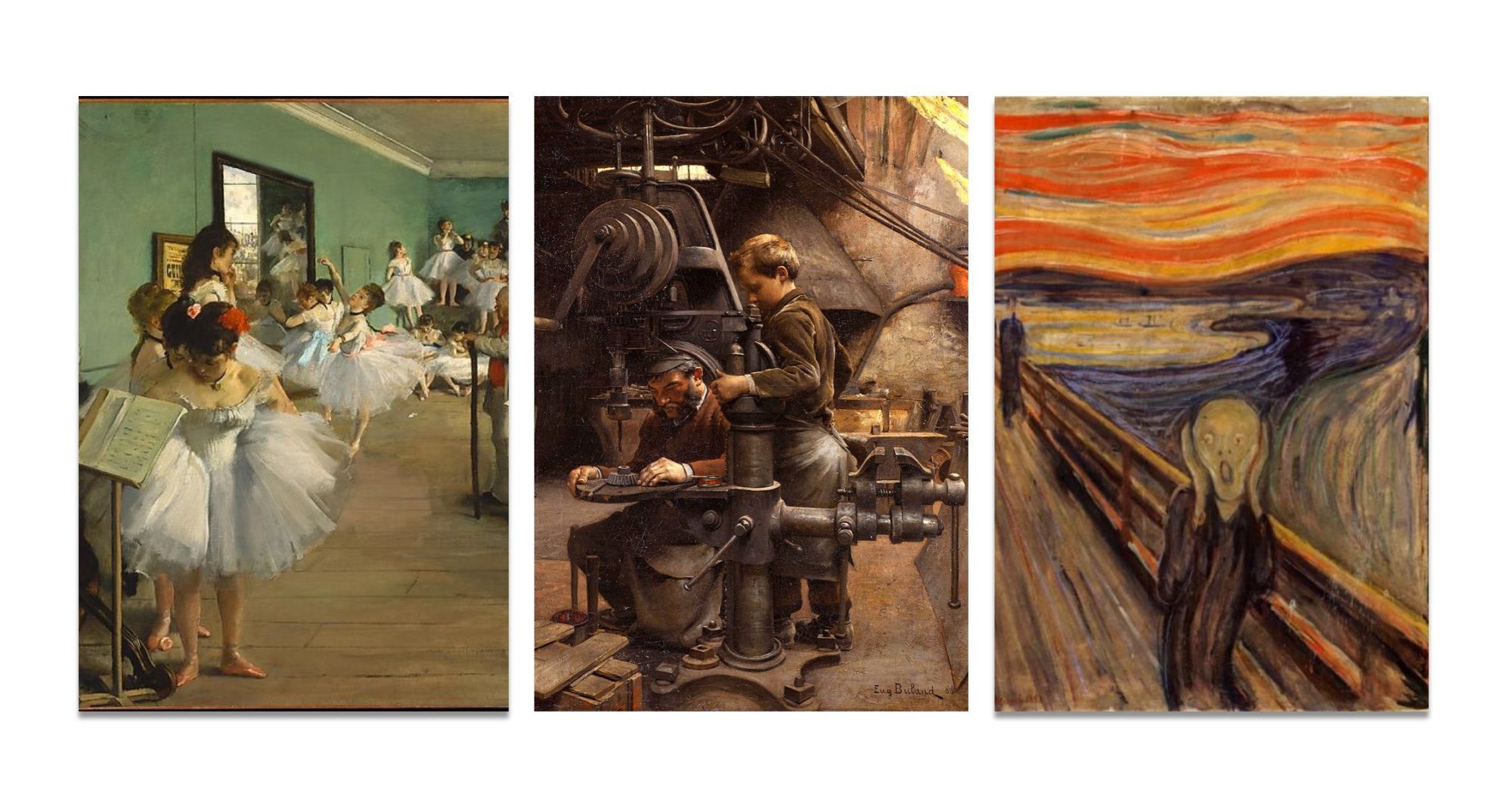In the period from 1700-1914, many revolutionary changes in science, politics, and culture draw increased importance to the concept of “borderlands”–both internal, in terms of identity, and external, in terms of border crossings. In this module, we will explore a variety of borderlands as they concern identity, language, creative expression, and culture. We will work on our own borderlands, in addition to producing critical and creative analyses of the borderlands in the texts we study.
Texts
- Toru Dutt, “Our Casuarina Tree” and “Jogadhya Uma” from Ancient Ballads and Legends of Hindustan (1881)
- Elizabeth Barrett Browning, from Aurora Leigh (1856)
- Zitkala-Sa, “A Warrior’s Daughter” (1902)
- W.E.B. du Bois, from The Souls of Black Folk (1903)
- Gloria Anzaldúa, from Borderlands/La Frontera: The New Mestiza (1987)
- Mary Louise Pratt, from “The Arts of the Contact Zone” (1991)
Experiment 3: Observing a Community (50 points)
For this experiment, I’d like you to visit a community space that is unknown to you. It is up to you to decide how unfamiliar of a place you choose to observe. It may be a new fitness class that you’ve been interested in checking out, or it might be a cultural or religious service that you want to learn more about. Whatever you choose, be sure to secure permission to enter the space, and pay respect to all the customs of that space and community. Describe your experience, reflecting specifically on your feelings of belonging and not belonging. (250 words)
Project 3: Borderlands (200 points)
- Length: 1250-1500 words (total)
- Points: 200
- Final draft due on Blackboard before 11:59pm (digital): 12/7
“The U.S-Mexican border es una herida abierta where the Third World grates against the first and bleeds. And before a scab forms it hemorrhages again, the lifeblood of two worlds merging to form a third country — a border culture. Borders are set up to define the places that are safe and unsafe, to distinguish us from them. A border is a dividing line, a narrow strip along a steep edge. A borderland is a vague and undetermined place created by the emotional residue of an unnatural boundary. It is in a constant state of transition. The prohibited and forbidden are its inhabitants.”—Gloria Anzaldúa, Borderlands/La Frontera: The New Mestiza (1987)
For this final project, I ask that you reflect on the complexity of our cultural identities and shared human experiences in the 21st century. In the first part, you will devise your own philosophy on what it means to be human, based on your own stories, or based on the stories of other groups you have observed. In the second part, you will write an essay that connects your philosophy to the texts we have read this semester.
| Philosophy | Devise a philosophy of what it means to be human, to know oneself, and to know one another in the 21st century. Refer to Anzaldúa’s concept of “borderlands” and DuBois’s concept of “double consciousness” as models for constructing your own philosophy. Describe your philosophy in one to two sentences. | 25 points |
| Exposition | Expound upon your philosophy in one of the following formats: 1) memoir, using personal experiences to illustrate your identity and experiences across cultures; or 2) ethnography, using observations of other people. (500-750 words) | 75 points |
| Thesis | Place your philosophy in conversation with the texts and issues we explored this semester. Create a thesis statement that identifies how your philosophy connects to the questions we have explored in terms of borderlands and the complexity of the human experience in history. | 25 points |
| Essay | Write an essay that connects your personal philosophy with a minimum of 3 texts from the course syllabus. Write a minimum of 1-2 paragraphs to integrate each text into your essay. The full length should be 3 pages double-spaced (or 750 words) | 75 points |
